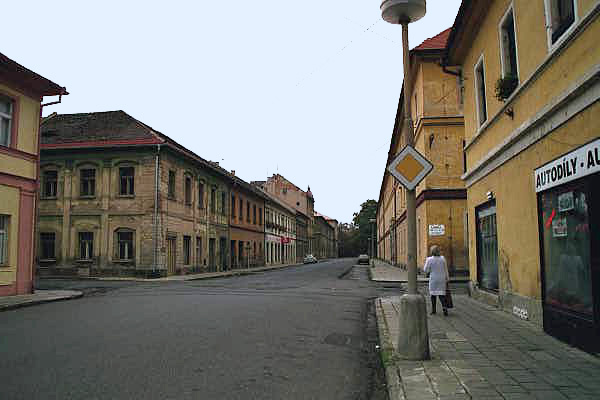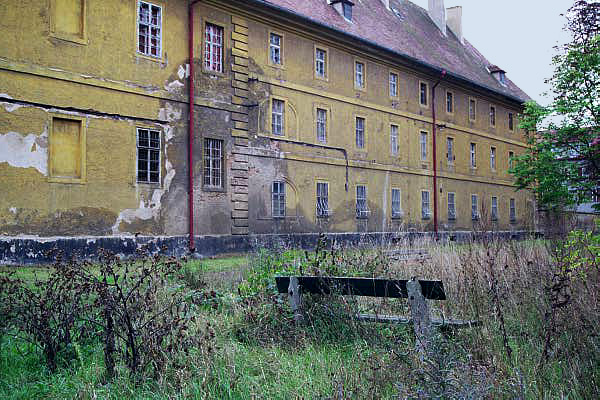Former Theresienstadt Ghetto
 Former Theresienstadt
ghetto is now the town of Terezin
Former Theresienstadt
ghetto is now the town of Terezin
The Czech town called Terezin would not
be of much interest to the rest of the world today if it had
not been for the one unfortunate chapter is its 220-year-old
history. The whole town became Ghetto Theresienstadt, opened
by the Nazis on November 24, 1941, as a way station for the Jews
of the Greater German Reich on their way to the gas chambers
of Auschwitz. This was part of Hitler's systematic plan, which
was code-named "The Final Solution to the Jewish Question."
After World War II ended on May 8, 1945,
the Jewish survivors went back to their former homes or to the
American occupation zone in Germany. In 1946, Terezin reverted
back to a normal town when the 3,500 former Czech inhabitants
were allowed to return. When I visited the town in early October
2000, I found it to be an eerie and depressing place, devoid
of any joy or laughter; the whole town exudes a feeling of desolation
and blight, as if neither time nor paint could ever restore the
town to its former status before it became an integral part of
the unique history of the genocide of the Jews. As it stands
today, Terezin is a disconcerting combination of beauty, squalor,
foul odors, melancholy and pathos.
On my visit in October 2000, I spent
7 hours in the town, walking around on my own without a guide,
stopping occasionally to sit on the park benches and to eat at
two of the three restaurants there. Terezin is quite small and
one can walk the length of the town in 15 minutes.
There are 219 residences in the town
and all the local people that I saw seemed to me to be dejected
and unhappy. I did not encounter a single local person who had
a smiling face, an energetic gait or the rosy glow of health.
I saw apathetic mothers pushing strollers with blond, blue-eyed
toddlers; there were old men shuffling along with the aid of
a cane, and old women carrying shopping bags as they made their
way to the several small stores whose grimy windows display cheap,
utilitarian merchandise for sale. I observed one older woman
standing on the market square in seeming quiet contemplation,
as though she were remembering the tragic history of the town;
then I realized that she was just bored with waiting for her
dog to finish his business on the green lawn.
The only sound I heard was the noise
of huge dump trucks, pulling trailers, rumbling through the town
on the road to Litomerice (originally named Leitmeritz by the
Germans), and fouling the air with their exhaust fumes. There
was no sound of music coming from the apartments, no birds singing
in the parks, and no children's laughter.
 Entrance to Brunnen
Park
Entrance to Brunnen
Park
Weeds had grown up around the benches
at the far end of Brunnen Park and the street bordering on the
Stadt park was carpeted with chestnuts that had fallen from the
trees.

Weeds have grown up
around a park bench near Hamburg barracks
Other than the dogs walking in the parks
with their owners, there was no animal life that I could see:
no squirrels, no pigeons, no birds, not even a cat sitting on
a window sill. The colorful geraniums in the window boxes on
some of the apartment buildings looked suspiciously like artificial
plastic flowers to me. There were a few flowers blooming in the
center of the town square, but there were no flowers planted
in the other parks, nor in any planter boxes on the sidewalks.
 Dump truck passes seedy
hotel across from courtyard behind Ghetto Museum
Dump truck passes seedy
hotel across from courtyard behind Ghetto Museum
|